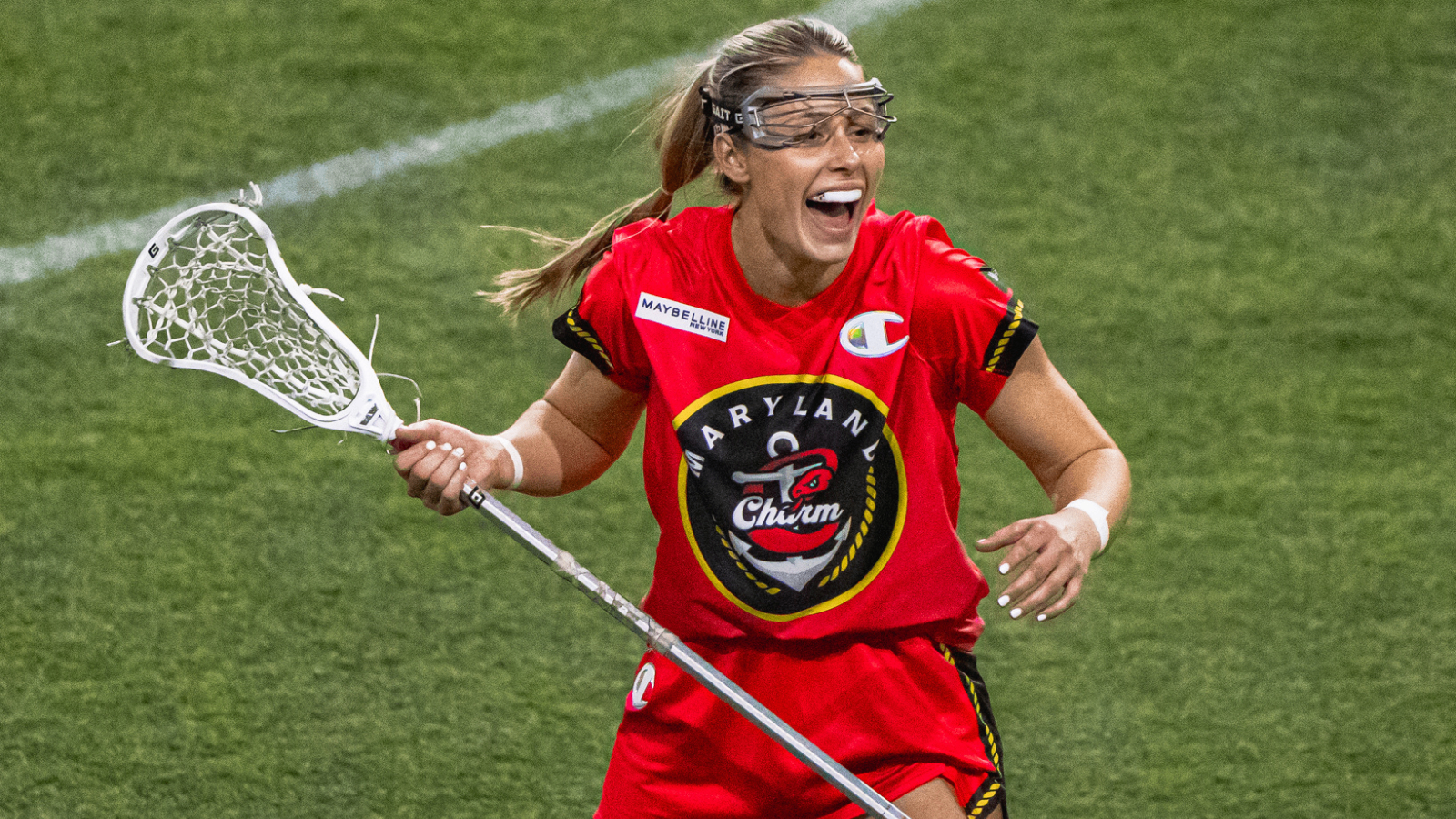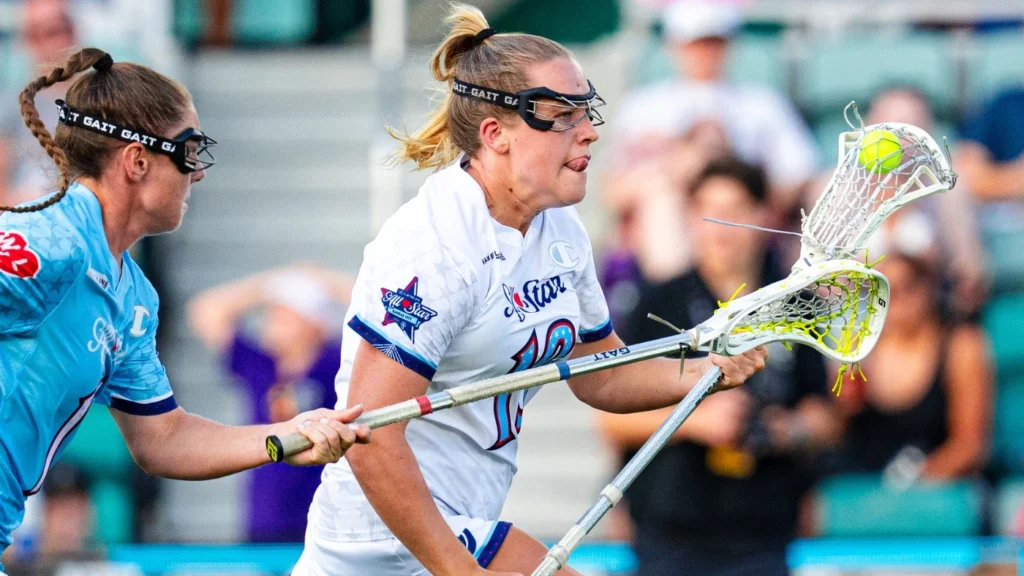Types of play
There are three distinct types of women’s lacrosse play: 10 vs. 10, 12 vs. 12 and Sixes.
The standard format of World Lacrosse, and now the WLL, is 10 vs. 10, with three midfielders, attackers and defenders alongside one goalie. NCAA women’s lacrosse plays 12 vs. 12 with four attackers and defenders, three midfielders and one goalie. The 12-vs.-12 format is typically viewed as the most traditional style of play across the women’s game.
Sixes features six positionless players in a pick-up-like game of lacrosse, and will be the official format of the sport come the 2028 Olympics.
Biggest differences between 10s and Sixes
Logistics
In 10 vs. 10, the field is 100 yards long and 60 yards wide. In Sixes, that field size shrinks dramatically to 76 yards by 39.
There is a 52-second shot clock in field lacrosse, whereas there is a 30-second shot clock in Sixes.
Pace of play
Sixes is a quicker version of lacrosse as opposed to the traditional field game. In Sixes, every player is an attacker or a defender depending on which team has the ball, eliminating the specialties seen in field lacrosse.
In 10s, there is a draw after every goal, while Sixes only requires one draw per quarter with a goalie clear after every goal, resulting in a more up-and-down style of play.
Team North All-Star and Maryland Charm defender Abby Bosco was a commanding presence on the draw circle during her time at Penn from 2018-2021 (The 2021 season consisted of one game before it was canceled due to COVID-19) and Maryland (2022, 2023), nabbing 268 career balls off the draw. She said ahead of the 2025 Championship Series that the draw circle is “all about the scrappy play, getting the loose balls and taking that mentality and implementing it into the live play, so going for the loose balls in the midfield and making those scrappy plays [is important in Sixes].”
“But it’s definitely a huge pivot from the field game. A lot of time in field, if you have a really good draw taker and circle players and you’re winning most of the possessions, it could make a game super lopsided, but Sixes takes that away and it makes it more of an even playing ground. It’s team vs. team. That’s it.”
In 10s, a team can play a defensive zone whenever it pleases; in Sixes, zone is only allowed if a team is man-down during a penalty kill.
“It’s super, super creative,” Team North All-Star and Maryland Charm defender Lizzie Colson said of Sixes ahead of the 2025 Championship Series. “I think lacrosse has always been creative but Sixes gives you a little bit more free reign. The Champ Series last year, I’m a defender normally, and I’m scoring goals or having assists where in field, maybe that’s not as likely to happen.”





